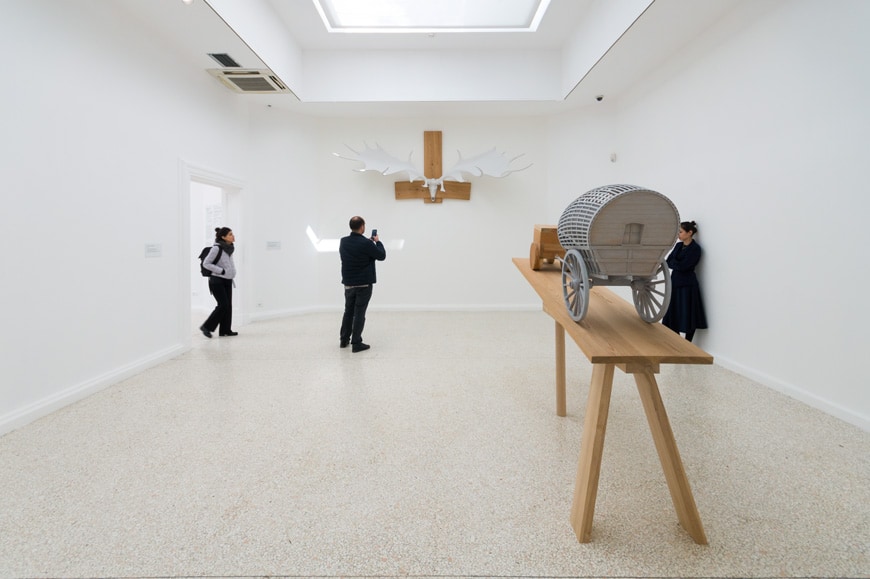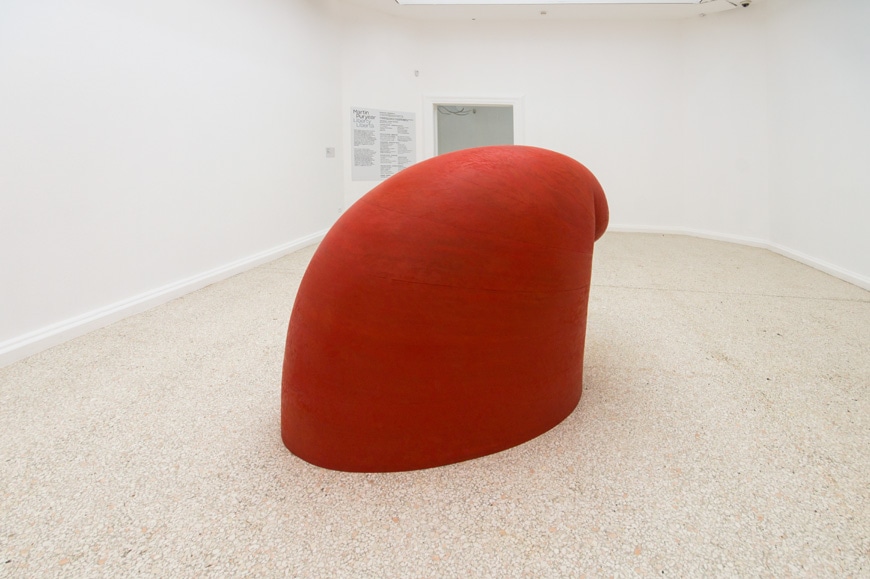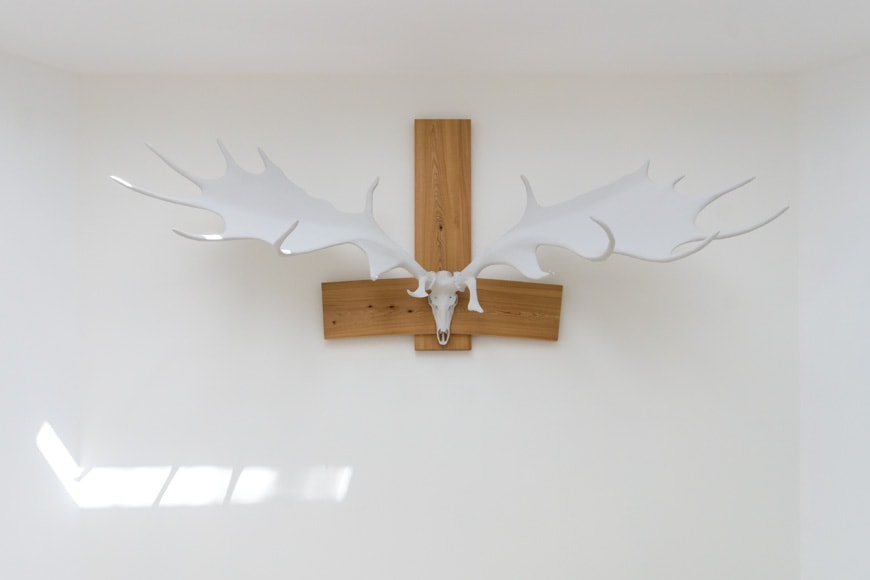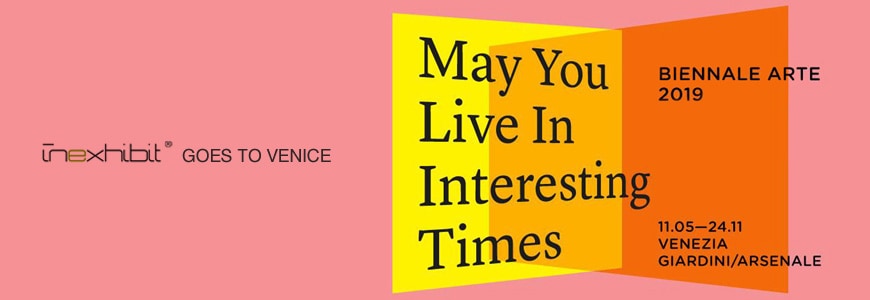Martin Puryear, Liberty – U.S. at the Venice Art Biennale 2019
Martin Puryear, Liberty / Libertà, The United States Pavilion at the Venice Art Biennale 2019, installation view. Photo © Riccardo Bianchini / Inexhibit.
Martin Puryear, Liberty – The United States Pavilion, Venice Art Biennale 2019
At the 58th Venice Art Biennale, the United States presents a solo exhibition by American artist Martin Puryear (b. 1941, Washington D.C.).
Entitled Liberty/Libertà, the exhibition features eight sculptures through which Puryear expresses its vision of the concept of freedom and its entanglements with concepts such as freedom, justice, and social responsibility.
In his works, Puryear uses a wide range of materials – stone, wood, bronze, iron, aluminum, cotton fabric – to create visually-imposing sculptural forms in which he often embeds a number of references to American history, with a special focus on that of Afro-Americans.
Curated by Brook Kamin Rappaport and designed by Tod Williams Billie Tsien Architects, Puryear’s exhibition in the United States pavilion is anticipated by a monumental site-specific work, a gigantic black cochlea-shaped sculpture entitled Swallowed Sun (Monstrance and Volute), that the artists installed in the forecourt.
Martin Puryear (in collaboration with Tod Williams Billie Tsien Architects), Swallowed Sun (Monstrance and Volute), 2019; southern yellow pine, steel, polyester, rope. Photo © Riccardo Bianchini / Inexhibit.
Inside, the pavilion accommodates seven sculptures, three of which were inspired by the form of headwear, a recurrent theme in Puryear’s work.
Martin Puryear, Big Phrygian, 2010-2014; painted red cedar. Photo © Riccardo Bianchini / Inexhibit.
This work was inspired by the form of the Phrygian cap, Puryear used it as a symbol of the struggle for freedom (indeed, the cap identified the freed slaves in the Roman Empire, was then adopted by the insurgents during the French Revolution, and by the enslaved blacks in the Americas during their struggle for equality).
Martin Puryear, Hibernian Testosterone, 2018; painted cast aluminum, American cypress. Photo © Riccardo Bianchini / Inexhibit.
It’s a work in which Puryear ironically alludes to masculine physical prowess. The sculpture reproduces the skull of an Irish elk, a prehistoric giant deer whose antlers, which could span over twelve feet, were a tool of sexual display so disproportionate that their huge metabolic toll possibly led to the extinction of the species.
Martin Puryear, Tabernacle, 2019; steel, wood, canvas, printed cotton fabric, glass. Photo © Riccardo Bianchini / Inexhibit.
Another work inspired by a hat – namely, the forage cap which was worn by Union and Confederate infantry during the Civil War, Tabernacle is actually a meditation on gun violence in America.
Martin Puryear, New Voortrekker, 2018; ash, American cypress, maple, mirror. Photo © Riccardo Bianchini / Inexhibit.
With his “New Voortrekker” (the Voortrekkers were Dutch-speaking colonies who traveled by wagon from the Cape Colony to the interior of South Africa to escape British rule in the first half of the 19th century), Puryear created a cart-shaped work that symbolizes “the idea of escaping into an unknown future, of traveling to safety, of taking dreams of advancement with you” and, at the same time, the contemporary global migration of people fleeing war, social conflicts, and poverty.
Martin Puryear, Cloister-Redoubt or Cloistered Doubt? , 2019; American hemlock, Eastern white pine, tulip poplar, red cedar. Photo © Riccardo Bianchini / Inexhibit.
A small gable-roof shelter resting on wood beams, Cloister-Redoubt or Cloistered Doubt? is a meditation on religious fervor and on contemporary American Redoubt, a movement that advocates migrating out of large cities to distance from a society that is perceived as corrupted and ill-fated.
copyright Inexhibit 2024 - ISSN: 2283-5474









